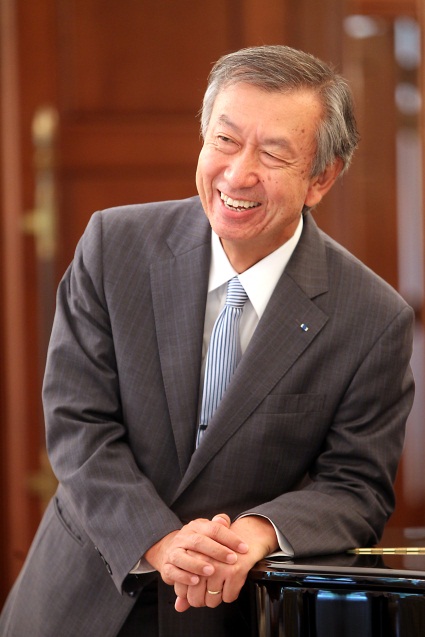25 April 2015
Makio Miyagawa

IN his autobiography, the late Lee Kuan Yew reflected on
“Asean - Unpromising Start, Promising future”. The history of regional
community building in Southeast Asia dates back half a century. The region was
then fraught with confrontation, internal insecurity and the threat of
communist infiltration.
Nonetheless, spirits were high in proclaiming their will to
“bind themselves together in friendship and cooperation and, through joint
efforts and sacrifices, secure for their peoples and for posterity the
blessings of peace, freedom and prosperity.” This spirit is still alive today.
1967 was a pivotal year, when the Association of Southeast
Asian Nations (Asean) was formed. Even after the war fought in this region
ended in 1945, battles and diplomacy for independence agonisingly continued.
Internal strife against communism persisted and intensified.
The Asia-Africa Conference in Bandung, in 1955, calling for
the swift end of colonial domination, was still halfway towards the
independence of all. At last, by the mid-1960s, most states in Southeast Asia
began to stand on their own feet.
Newly born nations needed time and efforts to create
peaceful and co-operative interfaces among them. Thailand brokered
reconciliation among Indonesia, the Philippines and Malaysia over certain
disputes.
The moment then arrived when the five nations, including
Singapore, realised that, without regional co-operation, the future of the
region would remain uncertain. Tedious negotiations led to the signing of the
Bangkok Declaration by the foreign ministers of the five nations.
Over the last half a century, Asean has skilfully managed
what one calls “sports-shirt diplomacy” to strengthen solidarity, deepen
co-operation and expand its wings. They overcame challenges in raging waves
during decades in the bipolar Cold War era.
The end of the Cold War in the early 1990s offered them the
alluring opportunity to realise the objective written down in its founding
document, the Bangkok Declaration, to make it open for participation to all
countries in the Southeast Asian region subscribing to the aims, principles and
purposes of Asean, now becoming 10.
Their hospitality spirit has treated outside rough powers
well, and often even tamed them, politely ushering them one after another to
become “dialogue partners”. Asean has exhibited brilliant and crafty diplomacy.
Half a century has passed. At the end of 2015, Asean members
are set to celebrate the formation of one community. The market potential is
remarkably large, as their aggregated population exceeds that of the European
Union or of North American Free Trade Agreement.
Asean’s total Gross Domestic Product tripled over the last
ten years. Its trade has reached 7% of world trade. Further, this community is
ready to proclaim determination to strengthen political and security co-operation
in this region of critical geostrategic importance.
As the Ambassador of Japan in Malaysia, I could not find
anything more delightful than this real advancement of Asean. Much more so for
my home nation, continuously rendering support with sincerity for its
formation, for its economic foundation and for its political stability for many
years since its inception till to date, and even days before its formation.
During Japan’s 15 years’ economic stagnation, it stepped
down to Asean’s third biggest trade partner, and the second largest investor
into Asean. Nonetheless, now with our economy resuming steam, trade and
investment links appear to thrive yet again.
From 1980 to 2012, Asean has received our official
development aid, amounting to US$216 billion, the biggest (22.5%) among its
recipients. It is our pleasure to see most states in Southeast Asia stand on
their own feet economically as well.
This year is designated in Asean as the year to formulate a
community. There appear to be three challenges: On the economic front, Asean
integration now faces the question of how to narrow income gaps among the
members, when and whether slower growing countries could agree on the same
level of liberalisation with faster growing countries, and when and whether faster
growing nations could accept liberalised inflows of cheap workforce from slower
growth countries.
On the political arena, to what degree and when could
countries in this region reduce self-imposed restrictions on the application of
democratic rules at the sacrifice of internal stability risks and intervention
risks from outside?
On the security field, to what extent could Asean countries
trust each other to lower threat perception with one another, and how much can
members of Asean be prepared to collectively face threats from outside the
association?
An even greater challenge to Asean seems to be whether Asean
could expand its horizon to create a broader regional co-operation. While Asean
fears being dominated, Asean finds its needs and interests to be connected with
outside powers. This is a dilemma for Asean.
Heavy
is the mission entrusted upon its Chair, Malaysia, this year.
Expectations of Malaysia are also high. Japan renders its fullest
support.
